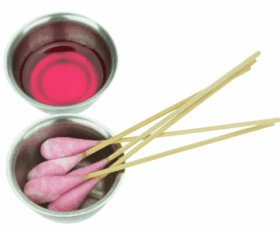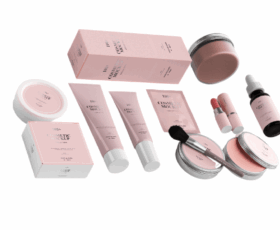Proposed Updates to Canada Cosmetic Ingredient Hotlist and CAC Aluminum Consultation Task Force Meeting
By: Deeksha Chahal, JUNIOR REGULATORY AFFAIRS ASSOCIATE, email
On 13 July 2023, Health Canada issued a notice detailing updates to the Cosmetic Ingredient Hotlist, aimed at enhancing consumer safety and product integrity within the cosmetic industry.
What is the Ingredient Hotlist?
The Canada Cosmetic Ingredient Hotlist, managed by Health Canada, outlines restricted or prohibited substances in cosmetics to ensure consumer safety. Updated regularly, it reflects new scientific data and regulatory changes.
Restricted ingredients may result from evidence of carcinogenicity, reproductive toxicity, skin sensitization, allergies, or environmental harm. Compliance is mandatory for all cosmetic products in Canada, with non-compliance leading to recalls, fines, or legal action.
By providing clear guidelines, the Hotlist helps manufacturers, importers, and distributors navigate ingredient safety. Prioritizing consumer health, it upholds the integrity of Canadian cosmetic products and promotes transparency in the marketplace.
What are the Proposed Changes?
These modifications encompass three key areas:
- Additions to the Hotlist
Health Canada has proposed several new additions to the Hotlist, targeting substances of concern within cosmetic formulations. For example- addition of prohibited substances such as Basic Green 4 (Malachite Green CAS# 569-64-2) and Thioglycolic acid esters, identified for their potential developmental effects and risks of skin sensitization, respectively.
- Changes to Existing Hotlist Entries
The notice outlines revisions to existing entries on the Hotlist, with a focus on both prohibitions and restrictions. For instance, the use of certain substances like Aluminum chlorohydrate will be restricted in specific product types, such as aerosols. Additionally, Health Canada aims to impose stricter concentration limits on substances like Benzoyl peroxide and Retinol, ensuring safer usage in cosmetic formulations.
- Incorporation of Additional Substance Identifiers
Furthermore, Health Canada is proposing changes to include additional substance identifiers or make minor corrections within the Hotlist entries.
Summary of Health Canada Proposed Changes to the Hotlist
The below table shows a summary of proposed changes to the Hotlist. See the full list of changes.
New prohibitions of ingredients
- Basic Green 4
- Thioglycolic acid esters
New restrictions of ingredients
- Benzophenone
- p-Chloro-m-cresol
- Retinal
- Solvent Violet 13
Proposed revisions to existing prohibitions
- Mixed cresols and derivatives
- Dialkanolamines, secondary
Proposed revisions to existing restrictions
- Alpha-hydroxy acids
- Aluminum chlorohydrate and its associated complexes
- Peroxide and peroxide-generating compounds
- Benzoyl peroxide
- Hydroquinone
- p-Hydroxyanisole
- Retinol and its esters
- Talc
The Draft Screening Assessment Report
At the close of January 2024, the Canadian Chemicals Management Plan unveiled the Draft Screening Assessment Report along with its corresponding Risk Management Scope concerning the Aluminum Containing Substances Grouping. See the Draft Screening Assessment.
Cosmetic Alliance Canada’s Aluminum Task Force
In response to the proposed conclusions outlined in the Draft Screening Assessment Report, the Cosmetic Alliance Canada (CAC) swiftly initiated an Aluminum Task Force (TF). This task force serves as a platform for in-depth discussions surrounding the underlying risk assessment, proposed risk management strategies, and avenues for scientific interventions aimed at refining the current understanding.
Health Canada’s Hotlist Ingredient Review Documents
Health Canada’s Consumer and Hazardous Products Safety Directorate (CHPSD), which is the branch of Health Canada responsible for regulating cosmetics released their Hotlist Ingredient Review (HIR) documents which is a new document that they are now using to support their consultation efforts when proposing to add, delete, or amend a Hotlist entry.
Implications and Future Directions
Changes to the cosmetic ingredient hotlist highlight the evolving regulations regarding aluminum and other listed ingredients in cosmetics. It’s crucial for cosmetics industry players to stay proactive and keep up with regulatory updates. This ensures they can effectively manage any effects on product formulations and compliance needs.
How Does this Impact You? Contact Us to Discuss
Dell Tech Laboratories —we’re here to help! We have clients big and small across the cosmetic industry.
We regularly conduct cosmetic assessments, product classification, and submit the cosmetic notification form to Health Canada on behalf of our clients.
Our formula assessments include a review against the Canadian cosmetic ingredient hotlist. And our consultants have expert knowledge on Canada’s Food and Drugs Act, staying on top of changes to the cosmetic regulations and their impacts on our clients.








